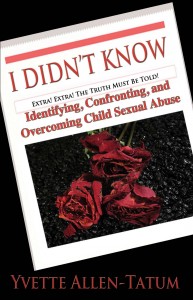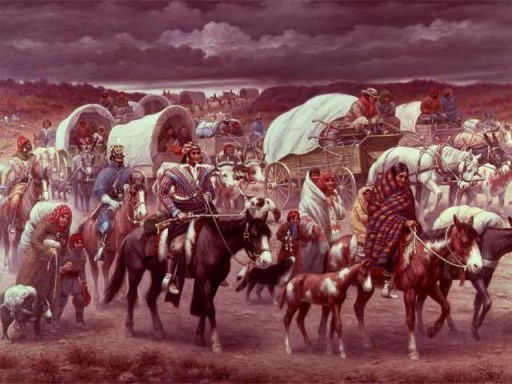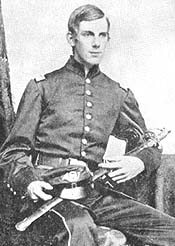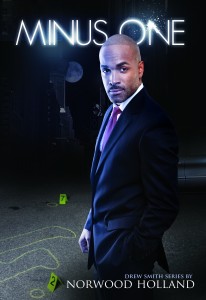I Didn’t Know: A Conversation with Yvette Allen-Tatum
October 22, 2013
[jwplayer mediaid=”2099″]
[1]Children are suffering from a hidden epidemic of child abuse and neglect. Every year more than 3 million reports of child abuse are made in the United States involving more than 6 million children (a report can include multiple children). The United States has the worst record in the industrialized nation – losing five children every day due to abuse-related deaths. Factor in Child Sexual Abuse (CSA), 9.3% of all child abuse reports are for children who have been sexually abused.
[2]Here are some quick facts: (studies by David Finkelhor, Director of Crimes Against Children Research Center)
- 90% of sexually abused victims know their offenders;
- 1 in 5 girls and 1 in 20 boys fall victim to child sexual abuse;
- Self-reported studies show that 20% of adults females and 5-10% of adult males recall a childhood sexual assault or sexual abuse incident;
- During a one-year period in the United States, 16% of youth ages 14 to 17 had been sexually victimized; and
- Children are most vulnerable to child sexual abuse between the ages of 7 and 13.
In my new book, I Didn’t Know: Identifying, Confronting, and Overcoming Child Sexual Abuse I reference 8 myths about child abuse:
Myth # 1
Normal-appearing, well educated, middle-class people don’t molest children.
One of the public’s most dangerous assumptions is the belief that a person who both appears and acts normal could not be a child molester. Sex offenders are well aware of our propensity for making assumptions about private behavior from one’s public presentation. In fact, as recent reports of abuse by priests have shown, child molesters rely on our misassumptions to deliberately and carefully set and gain access to child victims.
Myth #2
People are too quick to believe an abuser is guilty, even if there is no supporting evidence.
In truth, people are too quick to believe that the accused is innocent, even if there is plenty of supporting evidence.
Myth #3
Child molesters molest indiscriminately.
Not everyone who comes in contact with a child molester will be abused. Although this finding may seem obvious, some interpret the fact that an abuser didn’t molest a particular child in their care to mean that those children who do allege abuse must be lying. In truth, sex offenders tend to carefully pick and set up their victims Thus while sex offenders may feel driven to molest children, they rarely do so indiscriminately or without a plan.
Myth #4
Children who are being abused would immediately tell their parents.
The fact victims often fail to disclose their abuse in a timely fashion is frequently used as evidence that an alleged victim’s story should be doubted. Research, however, shows that children who have been sexually assaulted often have considerable difficulty in revealing or discussing their abuse.
Myth #5
Children who are being abused will show physical evidence of abuse.
A lack of physical evidence of sexual assault is often cited as support that an alleged perpetrator must be innocent. However, research shows that abnormal genital findings are rare even in cases where the abuse has been proven. Some acts, like fondling and oral sex, leave no physical traces. Even injuries from penetration heal very quickly in young children and thus abnormal genital findings are not common, especially if the child is examined more than 48 hours after the abuse. In fact, even with proven penetration in up to 95% of cases, genital examinations will be essentially normal.
Myth #6
Hundreds of innocent men and women have been falsely accused and sent to prison for molesting children.
Over and over again, the media has raised the question whether America is in the midst of a hysterical overreaction to the perceived threat from pedophiles. Actual research, however, shows that, as a whole, our society continues to under-react and under-estimate the scope of the problem.
Myth #7
If asked about abuse, children tend to exaggerate and are prone to making false accusations.
Contrary to the popular misconception that children are prone to exaggerate sexual abuse, research shows that children often minimize and deny, rather than embellish what has happened to them.
Myth #8
By using repeated interviews, therapists or police can easily implant false memories and cause false accusations among children of any age.
Although research has consistently shown that children rarely confabulate about having been abused and false allegations have been found to be rare, the potential for false allegations continues to be an area of great concern in sex abuse cases.
I no longer refer to myself as a child abuse victim or a child abuse survivor. I am a child abuse thriver (term not in dictionary). In Hosea 4:6, it states (paraphrasing), “My people suffer for lack of knowledge.” As it relates to the subject of Child Sexual Abuse, the United States does not have a clear and accurate understanding of CSA. Why?
• Many do not know what Child Sexual Abuse is;
• Some think CSA is limited to penetration;
• People are uncomfortable talking about CSA; and
• Many reject the facts and choose to believe the myths.
In short, you cannot conquer what your will not confront. Therefore, it is imperative that we are able to Identify Child Sexual Abuse in order to Confront Child Sexual Abuse and thus, Overcome Child Sexual Abuse.
[1] U.S. Department of Health and Human Services, Administration for Children and Families, Administration on Children, Youth and Families, Children’s Bureau. (2012). Child Maltreatment 2011. Available from http://www.acf.hhs.gov/programs/cb/research-data-technology/statistics-research/child-maltreatment
[2]The National Center For Victims of Crime. (2012). Child Sexual Abuse Statistics. Available from http://www.victimsofcrime.org/media/reporting-on-child-sexual-abuse/child-sexual-abuse-statistics.
Poet and hip hop artist MV hits his mark
August 19, 2012
 Michael Victor Whatley, Jr., also known as MV, a rising poet, hip hop artist and playwright, was recently on the streets selling advanced copies of his self- published book of poetry Trying To Be Grown and caught the attention of Washington Post reporter Peter Hermann. Profiled as a curios oddity, an “out of the ghetto” success story, the Post headline touted Former D.C. rec-league star turns to poetry to escape urban neighborhood and crime. It is debatable whether MV’s biography represents an escape, moreover it’s a narrative illustrating a young man rising above environment discovering his talent and building upon it with self-reliance and discipline.
Michael Victor Whatley, Jr., also known as MV, a rising poet, hip hop artist and playwright, was recently on the streets selling advanced copies of his self- published book of poetry Trying To Be Grown and caught the attention of Washington Post reporter Peter Hermann. Profiled as a curios oddity, an “out of the ghetto” success story, the Post headline touted Former D.C. rec-league star turns to poetry to escape urban neighborhood and crime. It is debatable whether MV’s biography represents an escape, moreover it’s a narrative illustrating a young man rising above environment discovering his talent and building upon it with self-reliance and discipline.
A DC native MV is a Speech and Theater major entering his senior year at Tennessee State University in Nashville. He is one of many fortunate young men who thrive despite the adversity and crippling influences associated with growing up in the inner city. Like most young men MV was drawn to sports hanging out at the Rosedale rec where he earned a reputation as an accomplished athlete. At the same he was developing another interest in the written word. He credits football with distracting him from being sucked into the street life and the neighborhood drug trade. Thanks to his aunt, grandmother and vigilant parental guidance that other interest ultimately held sway over his life and future.
At age 21 MV stands 5’7’, 125 pounds with a slight build, a brilliant smile, inquisitive eyes, and a gregarious and engaging personality all of which makes him more suitable for the stage than grid iron. While his brief biography may be of interest it is his growing body of compelling work that deserves more scrutiny. It reveals the essence of MV going about the business of an artist mastering his craft. He speaks of the influences of Mos Def who rose from hip hop to stage and screen and a particular affinity for the most notable and influential rapper Nas. MV’s book of poems Trying to Be Grown captures the experience of the young urban black male coming of age and undergoing the sometimes perilous transformation into manhood. He speaks of loneliness, love and lust while trying to find his place in the world. His poetic voice is tender and vulnerable at times introverted and deeply personal alternating to the outspoken and combative critical of the world around him.
Like poetry his music captures in form and feeling the hip hop genre’s elements of story-telling, subject matter, creativity, word play, metaphors, and delivery. At this stage in his development–a raw talent undergoing maturation he’s moving towards mastering the art form. While his work is sometimes punctuated with the raw underground qualities of the profane and the sexually explicit he is evolving toward a more artistic and sublime sound. That evolution is evidenced on his Youtube channel mikemvw21. Rhythmic hypnotic sounds abound on his new mixed tape titled Vol. 7. Pride scheduled to drop September 7th at Datpiff.com. Already a number of singles are generating buzz including Desperately Waiting, On my job, and Makes a song. Trying to Be Grown is also scheduled to become available on Amazon September 7th. MV has already attracted the attention of some major recording labels and hopes to break out in the near feature. Meanwhile his play The Good Die Young expects will be staged by a university troupe this academic year.
With entrepreneurial hustle MV is following in the foot steps and tradition of great Black poets like the young playwright and poet Langston Hughes who made his mark self-publishing and self peddling his works as well. MV is enthusiastically taking on the challenge of marketing and building a platform necessary for today’s digital market.
MV returned to his old neighborhood this summer greeted like a hometown celebrity by proud friends and family. And to hear him talk, his native Rosedale and DC are forever with him–having never escaped, but away only a sabbatical.
Chocolate City’s gentrification and the trail of tears
August 5, 2012
Gentrification is destroying whole communities leaving lower income residents homeless and hopeless seemed to be Saturday’s message from the special screening of Chocolate City sponsored by Maximize Good at the Watha T. Daniel Public Library. A discussion with filmmaker Ellie Walton and DC residents followed. While the film was shot in 2003 almost a decade later the message is resonating with greater urgency. The documentary covers the displacement of over 400 families who lost their battle against forced displacement from the Arthur Capper/Carrollsburg public housing project in Washington, DC. Filmmaker Ellie Walton views Chocolate City as a call to action against nationwide gentrification and redevelopment programs. The film explores the impact of rapid gentrification in the area through the work of a local group of women working for justice in their neighborhood.
In 2001, DC received a $34.9 million Hope VI grant to redevelop the 23-acre Capper/Carrollsburg public housing project as a mixed-income community, with the 700 public housing units to be replaced one-for-one, along with 1,000-plus market-rate and workforce-rate rental and ownership units and 50 Section 8 ownership units. The project is scheduled to be completed this year.
The 400 displaced families were promised a one-to-one replacement of all demolished public housing units. That is, for every one family displaced they would be replaced with a unit in the new housing project. However residents later discovered lower income residents did not qualify. Income qualifications based on regional median income standard disqualified a majority of renters with few qualifying to buy. The average median household income inside the beltway is $90.
Hope VI requires mixed income residents meet an income threshold of 60% of the regional average median income. Many of the former residents were minimum wage earners and financially barred from returning. The reality is that mixed income does not include low income. The former residents soon found additional barriers to reentry including a vague rule that only residents in “good standing” would be allowed to return those without past felony convictions.
As the discussion progressed many spoke with concern about the unfairness of current policies with some telling of their own displacement. In the film examples were sited on how the loss of community and its support resulted in the death of older displaced residents. In the discussion a participant identified as Daniel born and raised in DC told of his being homeless and currently having wait listed 8 years for housing. Community activist Louise Thundercloud shared her personal fights with DC Council members characterizing the situation as “cultural genocide” and efforts by the moneyed establishment to destroy communities of color specifically Black and Latino.
One participant likened the situation to the West Bank Israeli settlements with the Palestinians being pushed off their homelands. The issue of affordable housing is not likely to go away. According to the Urban Institute the federal government provides housing assistance through rent subsidies, tax credits for building affordable housing, and block grants for affordable housing initiatives. But only about one of every four eligible households gets such aid. And subsidized housing is found disproportionately in distressed neighborhoods characterized by crime, poorly performing schools, and a lack of jobs.
Low-income families are being forced out of their communities similar to the forced displacement of Native Americans in the 1830s. The history lesson remains the same. Misguided government policies are doing more harm than good and by inadequately addressing the problem only perpetuates the cycle and generations of inescapable poverty and disadvantage. Chocolate City as the filmmaker declares does indeed stand as a call to action.

Health Care Reform saved by The Magnificent Yankee
June 29, 2012
 I’m no legal scholar, but correctly predicted the Supreme Court would uphold the Patient Protection and Affordable Care Act. That prediction was based on my understanding of stare decisis, the obligation of the courts to honor past precedents. Out of curiosity and for my own edification I read the relevant case history supporting the Commerce Clause arguments. While the government’s reliance on the Commerce Clause struck me as weak and in fact was struck down by the Court I wondered why they did not aggressively argue the Tax and Spending clause. As we all know there are only two things certain in life death and taxes, and the government’s power to tax is indisputable. The Tax and Spending Clause was used as a back up argument while the Commerce Clause argument seem to serve as a red herring.
I’m no legal scholar, but correctly predicted the Supreme Court would uphold the Patient Protection and Affordable Care Act. That prediction was based on my understanding of stare decisis, the obligation of the courts to honor past precedents. Out of curiosity and for my own edification I read the relevant case history supporting the Commerce Clause arguments. While the government’s reliance on the Commerce Clause struck me as weak and in fact was struck down by the Court I wondered why they did not aggressively argue the Tax and Spending clause. As we all know there are only two things certain in life death and taxes, and the government’s power to tax is indisputable. The Tax and Spending Clause was used as a back up argument while the Commerce Clause argument seem to serve as a red herring.
The court was faced with a dichotomy determination and it was Justices Story and Holmes who provided the answer. Roberts writes:
“The text of a statute can sometimes have more than one possible meaning. To take a familiar example, a law that reads “no vehicles in the park” might, or might not, ban bicycles in the park. And it is well established that if a statute has two possible meanings, one of which violates the Constitution, courts should adopt the meaning that does not do so. Justice Story said that 180 years ago: “No court ought, unless the terms of an act rendered it unavoidable, to give a construction to it which should involve a violation, however unintentional, of the constitution.” Parsons v. Bedford, 3 Pet. 433, 448–449 (1830). Justice Holmes made the same point a century later: “[T]he rule is settled that as between two possible interpretations of a statute, by one of which it would be unconstitutional and by the other valid, our plain duty is to adopt that which will save the Act.” Blodgett v. Holden, 275 U. S. 142, 148 (1927) (concurring opinion).
The most straightforward reading of the mandate is that it commands individuals to purchase insurance.” National Federation Of Independent Business Et Al. V. Sebelius, Secretary Of Health And Human Services, Et Al. ___U.S. ___ (2012)
Justice Holmes by reaffirming Justice Story’s dictum provided the necessary constitutional basis to uphold the Health Care Reform Act. Justice Oliver Wendell Holmes Jr. served as on the Supreme Court from 1902-1932. The 1950 Academy Award winning movie The Magnificent Yankee introduced me to Justice Holmes long before I had any interest in law school. The Boston blue blood was a wounded Civil War veteran who saw a lot action. He bequeath his entire estate to the U.S. Treasury and wrote the dissenting opinion in the Lochner vs. New York, 198 U.S. 45 (1905), a landmark case that held a “liberty of contract” was implicit in the due process clause of the Fourteenth Amendment. Holmes accused the majority of judicial activism, pointedly claiming that the case was “decided upon an economic theory which a large part of the country does not entertain. He attacked the idea that the Fourteenth Amendment enshrined the liberty of contract, citing laws against Sunday trading and usury as “ancient examples” to the contrary. He added, “Some of these laws embody convictions or prejudices which judges are likely to share. Some may not. But a constitution is not intended to embody a particular economic theory.”
President Obama has likened the Lochner case to this instant case. Lochner was about limiting the collective bargaining rights of employees in favor of the employer. Roberts in this instant rather than trying to fashion conservative reasoning to overturn the independent mandate he stayed true to the legal doctrines and the fundamental principles of jurisprudence upon which American law is based. Though much credit will be given to Justice Roberts for his decision in upholding the Affordable Care Act he must share that credit with Justice Holmes and Justice Story for mapping the direction.
Thank You Justice Holmes and Justice Story.
Seeking A Twitter Breakthrough
September 26, 2011
I’ve been waiting for a Twitter breakthrough when suddenly it all becomes crystal clear this Tweeting phenomenon. I opened a Twitter account three years ago. It lay fallow for the first two years. I would occasionally log in watch the Tweets and wonder why? The endless mundane comments surrounding the minutia of people’s ordinary uninteresting everyday lives all seemed like a waste of my time.
Obviously a generational thing as a Boomer the Millennial fad amounted to nothing more than nonsense. I had the same sentiments toward Facebook but that proved me wrong so I was willing to give it a chance. Facebook’s value revealed it power and purpose when I began to reconnect while my college pals and enjoyed the ability to correspond on a daily basis. Social Media had not impressed me until I attended a writer’s conference three years and heard the buzz about Social Media. It could help build your writer’s platform and your brand.
The Facebook breakthrough came early on. I soon launched a Kickstarter project to cover printing cost of my first novel. Facebook proved to be an incredible tool in attracting donors. Now the challenge becomes is to use Twitter to help develop a readership. Facebook offers greater advantages interacting with friends who have profiles and pictures aiding relationship building without the 140 character limitation. Twitter profiles are often vague, blank, or indistinct. You know very little about your followers.
I was befuddled as to how to build relationships and how Twitter would enhance my writer’s platform. Then about a year ago things began to change as I started to recognize relationships. I began to make a conscious effort and discovered the more time I was logged in, the more I observed and participated the more followers I attracted. The problem is finding your niche interest and followers with whom I had common interest. With a mere 200 followers I’m not there yet. I think its like swimming you just have to wade in and practice until you learn how to stay afloat.
I came to recognize the value of Twitter when it brought me face to face with a celebrity actor author whom I had admired and followed. Recently he tweeted he was doing a book signing at the Convention Center downtown. This was an opportunity I acted on immediately and came away thinking, wow, if only I could get people to come to my book signings on a moments notice that would be a breakthrough.
I have a twofold Twitter goal for the next year, (1) to build relationships with followers that will help promote my books, and (2) implement business and marketing strategies to get results. I will monitor my progress in terms of following and followers pursuing that breakthrough. Currently with 196 followers and 489 in a years time I hope to report the milestone and progress in pursuit of that breakthrough. Not only will I be staying afloat but doing laps.







